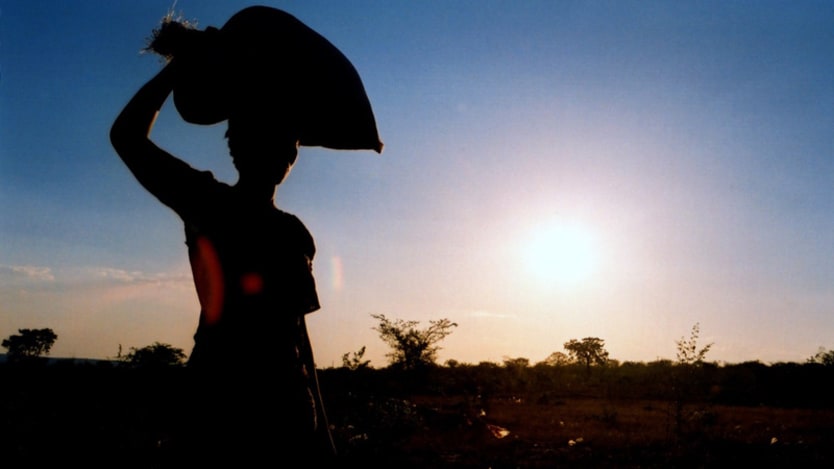
The 2016 World Disaster Report’s release today is tragically timed: Hurricane Matthew has so far claimed more than 1,000 lives in Haiti, and many aid agencies and organizations around the world must first provide humanitarian relief to those without access to food, water, shelter and medical care before communities and international partners can begin the long-term work of rebuilding.
But even at the earliest stages of a humanitarian crisis, it’s important to look ahead at the strategies and tools available to ensure the most effective use of resources and maximize preparedness for the next crisis.
One of the most ubiquitous of these is the cost-benefit analysis, an evidence-based quantitative tool useful for informing future resource allocation and deployment by existing and potential donors and other relevant stakeholders to assess the extent of the impact of interventions. It’s specifically intended to demonstrate the financial and economic value of incorporating disaster risk reduction initiatives into development planning.
CBA measures the costs and benefits associated with undertaking projects and programs. It also takes into consideration environmental costs, biodiversity preservation, disaster preparedness, informal economic activities, social opportunity cost of labor, and opportunity cost of investment.
One of the key indicators used in CBA is the benefit-cost ratio. This ratio is an indicator that attempts to summarize the overall value for money of a project by expressing the proportion of costs to its benefits. A BCR greater than 1 would be favorable as it realizes more benefits compared to costs.
Relief to Haiti takes form following Hurricane Matthew
The U.N. has launched a $120 million funding appeal to reach 1.4 million Haitians over the next three months after Hurricane Matthew struck last week. International and local aid groups are now assessing the damage and determining needs for the long term.
In 2015, the International Federation of the Red Cross and Red Crescent Societies undertook a number of food security and livelihoods-related CBA studies across national societies. The cases include Namibia and Zambia from the Zambezi River Basin Initiative, Rwanda, Georgia and Tajikistan.
The overall objective of the studies was to provide quantitative analysis to complement the documented qualitative benefits of the IFRC-supported programs. The results could then be used to inform future decision-making and increase of donor investment funds into development interventions.
In Namibia, the focus of the study was on food security and disaster preparedness interventions in Lisikili, Katima, Kanono, Isize, Kwena and Namalubi. Through community and individual interviews, the study measured the impact of community-driven activities and noted a BCR of 3.7 for the period 2009–2014, meaning every dollar spent during that period reaped $ 3.70 in benefits for communities.
This demonstrated a positive net impact and economic return on resources invested for the project. The study concluded that program integration strengthens resilience capacity of communities, it is cost effective and has positive impact on disaster risk reduction.
In Zambia, the partnership on livelihoods programming with district-level government stakeholders helped to institutionalize the program and to ensure its quality through continuous technical support. The linkage of the livestock and crop management program to agricultural best practices and disaster preparedness also provided a holistic approach in ensuring that food security and livelihoods are sustainable and resilient to sudden events along the Zambezi River Basin. The program received a BCR of 4.9 for the period 2010–2015; a positive net impact of resources invested in the ZRBI.
In Rwanda, the main activities include provision of shelter, food security and livelihoods activities, especially for orphans, vulnerable families and returnees. The livestock initiative provided herds of cattle, pigs, goats, rabbits and other livestock to targeted communities. To ensure that each household in the community received livestock, a rotation program was launched, through which the firstborn livestock was passed on to another household. Each animal then reproduced a newborn for another household.
The study findings revealed impressive performance for pigs and cows compared to goats. The projections based on 2014 and 2015 results showed that 1 Rwandan franc (0.12 cents) invested in pigs would bring back 6 Rwandan francs in 2020, a sign of a very profitable project. The CBA results for cows suggest that 1 Rwandan franc invested by the Rwanda Red Cross had quadrupled after an eight-year period, and would return about 5 Rwandan francs in 2020. The goats registered a much smaller BCR of 1.8 over the same period.
Other spin-off benefits were employment creation, improved animal husbandry practices and techniques, as well as improved food security and dietary patterns. More collaboration and information sharing also created better institutional relations.
In Georgia, its CBA found that the $2.4 million of external support to the disaster risk management program of Georgia Red Cross Society, launched in 2010, had paid off extremely well. The study identified that the intervention had avoided hazard losses and analyzed the various channels that led to loss avoidance. There were also some significant organizational and governance co-benefits.
Through assuming time horizons of 15 years, adjustment of past financial figures by inflation and discounted for years beyond 2015, cost-benefit ratios were calculated for three surveyed areas. Identified cost-benefit ratios ranged from 12.53 (Sagarejo; supported over four years) to 20.60 (Ambrolauri; supported over four years) to 54.54 (Lagodekhi; supported over one year, effective mitigation). Although the highest ratio is partially attributable to mitigation as well as excellent targeting (high level of hazard exposure), the study also shows that the promotion of household preparedness pays off.
In Tajikistan, the focus concerned geophysical and hydro-meteorological hazards. The earthquakes in recent years have had minor impact and damages. From the CBA studies, results from communities’ projects in Navbunyod show positive initial investments of 4.7 times as of 2015; in Khonako, benefits exceeded investments by 2.3 times.
Overall, the CBA studies carried out by the IFRC show that DRR programs and projects implemented by Red Cross and Red Cross national societies can be cost effective as they save not only lives but also money and they build community resilience.
Join the Devex community and access more in-depth analysis, breaking news and business advice — and a host of other services — on international development, humanitarian aid and global health.
